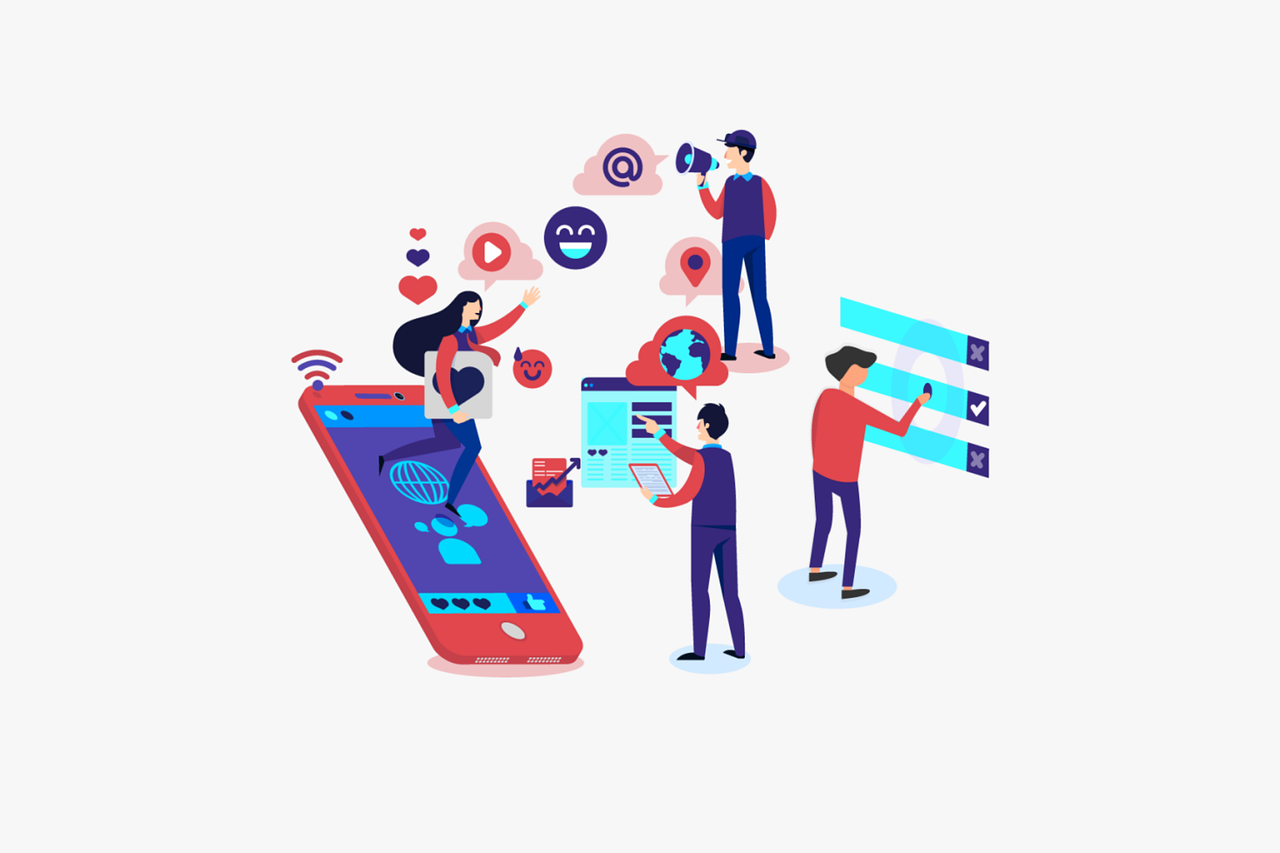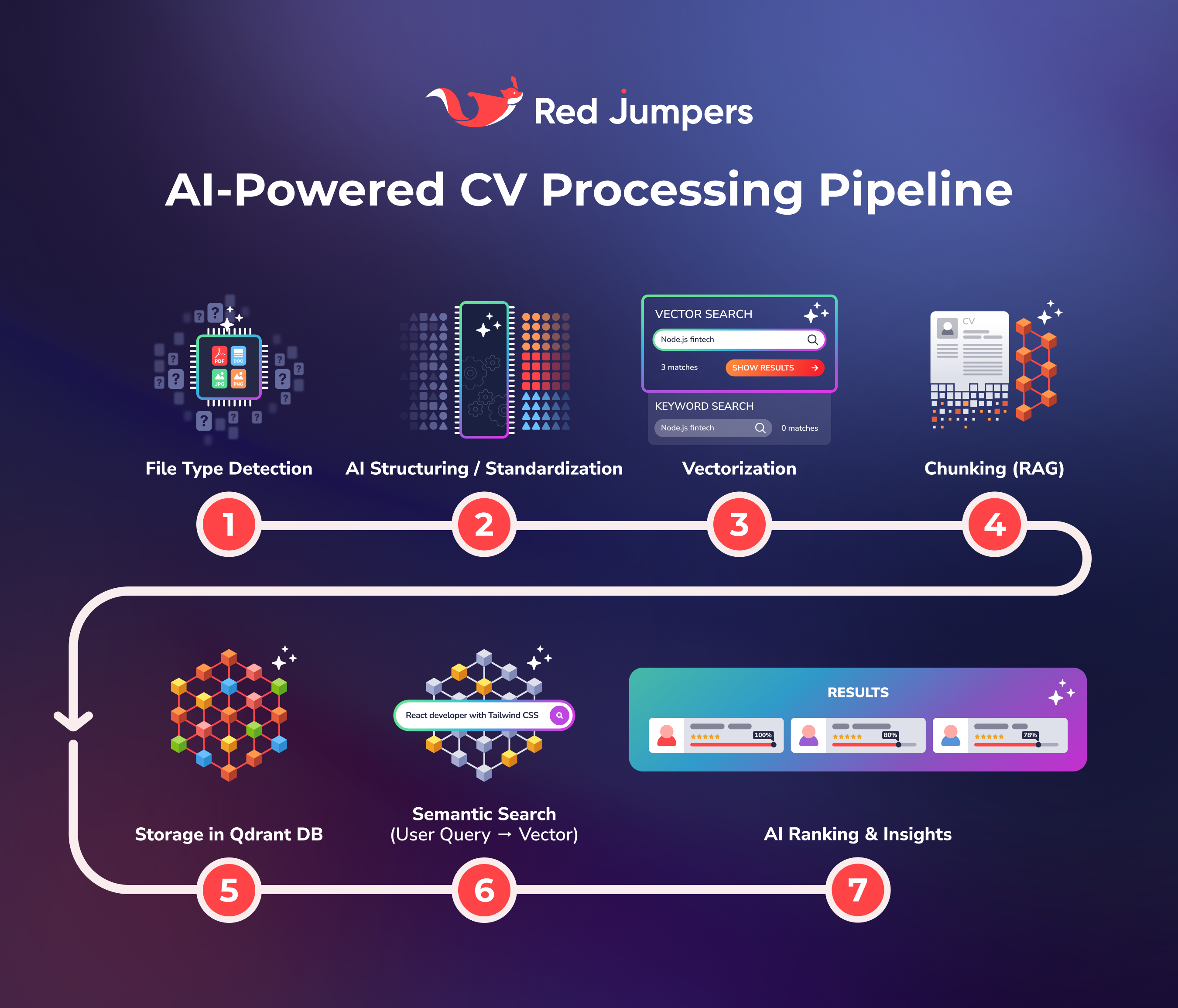The latest statistics show that in Q3 of 2023, Android continued its dominance as the foremost mobile operating system, commanding an impressive 70.5 percent market share globally. This underscores the necessity for businesses to create cutting-edge Android apps that ensure the best possible user experience across a variety of Android devices.
In this article, we’ll cover everything related to Android app development – pros and cons, tech stack, trends, tools, and so on. Without further ado, let’s dive right in.
What is Android app development?
Android app development is the process of creating software applications specifically designed to run on devices that operate on the Android operating system. It involves designing, coding, testing, and releasing applications tailored for Android smartphones, tablets, smartwatches, and other compatible devices.
Developers typically use programming languages such as Java or Kotlin, along with the Android Software Development Kit (SDK), to build apps that can offer a wide range of functionalities, from entertainment and productivity to communication and beyond.
| Find out how to launch an app successfully and navigate the complexities of the competitive app market, ensuring your product stands out and resonates with your target audience. |
Pros and Cons of Android app development
For businesses in need of an Android app, it’s advisable to grasp the intricacies involved in the development process. Understanding the pros and cons faced by Android app developers provides valuable insights into the creation of an effective Android application.
Let’s take a short overview of the advantages and disadvantages of Android app development.
Pros:
- Customer service advantages:
- Builds brand loyalty
- Provides valuable feedback and detailed product/service information
- Ensures 24/7 accessibility for clients
- Graphics support:
- Enables diverse graphic design needs, including gaming applications
- Supports 2D and 3D graphics for enhanced user engagement
- Cost-effectiveness:
- Android SDK is free, with minimal registration fees
- Low investment with a high return on development
- Competitive performance with lower advertising budgets
- High-level security:
- Built-in features protect against malware and viruses
- Meets security requirements for various organizations
- Integration options:
- Flexible application integration into any system
- Enhances overall application performance
- Android forks:
- Open-source system with various alternative versions (forks)
- Customized versions for different devices, expanding functionality
- Broad market presence:
- Google, along with manufacturers like Samsung and Xiaomi, continuously enhances Android
- Compatible with a wide range of devices, ensuring global market penetration
- Fast development process:
- Rapid development cycle, allowing businesses to transform ideas into products quickly
- High-speed development with considerations for nuances
- Versatility:
- Android development in Java facilitates targeting on various platforms
- Wise allocation of resources for efficient development
- Google Play Store options:
- Quick approval and adjustments in the Google Play store
- Opportunity for MVP releases and controlled testing
- Open-source platform:
- Developed in Java, making it adaptable to multiple platforms
- Android is an open-source OS, fostering innovation and flexibility
- Free integration with other Google products
Cons:
- No one-size-fits-all UI:
- Lack of consistent user interface across devices
- Developers use responsive templates and incremental testing for consistency
- Third-party APIs incompatibility:
- Security issues:
- Open-source nature makes Android susceptible to security threats
- Developers must ensure sufficient security through encryption
- Low visibility:
- High competition in the Google Play store, with a preference for free apps
- Requires a robust marketing strategy for monetization
- Copyright issues:
- Lack of thorough testing by Google may lead to similar apps violating patents
- Working with experienced developers is crucial to address copyright concerns
- Low user purchasing power:
- Majority of Android users in countries with low purchasing power
- Free apps with ads are preferred in such markets
- Development process challenges:
- Slower development compared to iOS due to fragmentation and system release cycles
- Constant testing required for compatibility across devices and versions
Technology stack for creating Android apps
The mobile app tech stack for Android involves various software tools, languages, and frameworks. The primary hardware requirement is a device compatible with the Android operating system. For development, a Linux or Windows-based PC running Android Studio IDE is essential. This tech stack encompasses:
Development tools include:
- Android Studio that streamlines Android app development with a tailored integrated environment
- Android SDK (Software Development Kit) that offers a downloadable toolkit, complete with code samples and libraries. It extends its functionality by enabling the integration of 2GIS maps, allowing for unique markers, route estimation, and object information retrieval.
Programming Languages
When it comes to crafting Android applications, there are three key programming languages in the toolkit: Java, Kotlin, and Dart.
Java stands out as one of the most widely embraced languages for Android app development. Its popularity among developers is attributed to its versatility and user-friendly design.
As the new kid on the block, Kotlin has swiftly become a prominent language in Android development. It seamlessly interoperates with Java, allowing developers to blend Kotlin and Java code within a single project. Kotlin is the language of choice for many Android projects, and its popularity is on a steady rise.
Dart steps into the scene as the language powering the Flutter UI software development kit, a creation of Google for cross-platform development. Flutter, leveraging Dart, enables the creation of diverse apps across Android, iOS, Linux, Windows, macOS, and Google Fuchsia platforms.
Android UI Tools
Creating a user interface for your Android applications involves utilizing various tools provided by the platform:
- Android pre-built tools
Android equips developers with standard pre-built UI tools available upon installing the Android SDK package. This involves crafting the UI using XML files to declare the desired look of the application. The SDK offers a plethora of UI classes such as Button, TextView, and ConstraintLayout, utilized by XML to define the application’s UI.
- Android Jetpack Compose
Google introduces Jetpack Compose as a new UI library, employing a declarative approach to construct native UI. In contrast to the XML-based pre-built method, Jetpack Compose allows for direct declaration in code. To integrate Compose, you’ll need to add dependencies, enable compose build features, and specify the Kotlin compiler extension version in your build.gradle file. Once configured, Jetpack Compose becomes a versatile tool for your projects.
- Material Design
Both Android’s pre-built UI tools and Jetpack Compose can seamlessly collaborate with the Material Design library, offering modern UI components.
5 Best Android App Development Tools
Apart from Android Studio, Android developers can expedite app creation with a plethora of advanced Integrated Development Environments (IDEs) and time-saving tools:
- ADB (Android Debug Bridge) comes integrated with Android Studio, serving as a command-line “bridge” facilitating communication between Android devices and other computers during the development, debugging, and QA processes.
- Before the era of Android Studio, Eclipse held the title of the officially recommended IDE for Android application development. Eclipse continues to be a choice for developers crafting Android and cross-platform apps, showcasing its versatility across various programming languages.
- Genymotion, an alternative Android emulator, aids developers in testing and previewing applications across more than 3,000 device scenarios. It is particularly favored by gaming developers due to its pre-installed standard Android images and graphics, enhancing the testing process.
- Vysor serves as an emulator solution enabling the “mirroring” of an Android device onto a computer, granting control through the keyboard. Additionally, it facilitates screencasting from your device, making it handy for meetings and demos.
- SourceTree, a free and open-source tool, simplifies Git repository management with its user-friendly Git GUI. SourceTree further enables the staging and discarding of changes at the file, hunk, or line level.
How Red Jumpers can help you hire the best Android developers?

At Red Jumpers, we can streamline your process of hiring the best Android developers by leveraging our expertise in talent acquisition. With a thorough understanding of the Android development landscape, we can identify and assess candidates who not only possess technical proficiency but also align with your company culture and project requirements.
Contact us today and hire a dream team for your next Android project!
Android App Development Trends in 2023-24
With trends shifting year after year, the methods for developing Android mobile applications undergo continual changes. Take a look at the latest Android app development trends:
- The advent of 5G technology is set to revolutionize various aspects of our lives. With enhanced battery life and stronger signals, 5G-enabled smartphones outperform 4G and Wi-Fi, accommodating more users without slowdowns. Beyond phones, the widespread connectivity of 5G facilitates shorter network latency, opening avenues for innovations like remote medical surgery and seamless real-time collaboration on 3D models in remote work scenarios.
- Chatbots streamline time-consuming tasks typically handled by customer service agents. They prove beneficial for websites with community support, addressing inquiries about your business efficiently.
- The rise of mobile devices has ushered in a new era of applications, including Augmented Reality (AR) and Virtual Reality (VR), collectively known as immersive technologies. These technologies overlay computer-generated images onto real-world environments, providing users with unique experiences. While adoption is robust in some industries, others are just beginning to realize the commercial potential of immersive technologies.
- Instant apps offer advantages for both developers and users. Developers can seamlessly showcase their app’s features without the need for users to download it through the app store. This streamlined approach caters to users who only seek specific features without committing to the entire app installation process.
- Beacon technology transforms user interaction by delivering notifications, updates, and sales based on their location. Users no longer need to manually check for updates; instead, the app notifies them when they approach relevant places. Geofences, acting as versatile containers, can be strategically placed in various locations like stores, streets, and more, allowing the delineation of areas of interest such as retail spots, restaurants, and business complexes.
Conclusions
As you embark on your Android app development endeavors, remember that the journey is not just about code; it’s about crafting experiences that resonate with users and staying adaptable in the ever-evolving world of mobile applications. Here’s to creating exceptional Android apps that leave a lasting impact!




